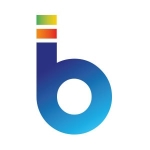What is our primary use case?
The data is captured by transaction processing systems, and even when the data is captured by a very sophisticated enterprise resource planning system, or ERP system, such as SAP. We'll find that that data is organized in a manner that is suited for the data updated. Therefore, when data has to be used for decision making, it has to be reoriented and organized in a manner that is suitable for data analysis and further for predictive analytics also. What we do is pull out data from multiple data sources, either on SAP or somewhere else.
There could be a certain budget or plan or target-related data on some other platform or on a Microsoft Excel spreadsheet. The data is stored at different places. Some data could be on your internet platforms. Wherever it is, we pull out the data. Then we get that into the SQL server and we organize it in a manner that's suitable for further creation of dashboards and analytics applications, which can be used for better decision making.
How has it helped my organization?
The company has been able to make better decisions, due to the fact that, when we prepare business intelligence or data analytics applications, they are used by very similar decision-makers, as well as middle-level management decision-makers. From the same infrastructure, the data is used by even the report consumers. You can consider three layers of users, report consumers, mid-level use, as in, those who do interactive analysis of data, and decision-makers. Right at the top, those who would like to see the key performance indicators and use them for deciding a course of action can do so. All of our applications have been providing functionality for all these types of needs, including risk and compliance.
What is most valuable?
The solution offers many features, however, just the way in which that product is designed is quite useful for us.
The way in which it can connect to multiple data sources is also very useful. The way in which data can be manipulated by using data analysis expressions has also been a good feature for us.
The solution is stable.
The solution is quite scalable.
Our clients seem to be happy with the level of technical support they receive.
With our experience, the initial setup is straightforward.
Microsoft is often updating the solution adding new helpful features.
What needs improvement?
I'm not a product expert as such, however, I am aware that Microsoft comes out with a newer version, which is really downloadable and it's replaced every month. Therefore, the improvement is continuous. Since Microsoft provides a free downloadable desktop version of our BI. That desktop portion gets a new version which comes every month, we can replace the older version.
Their ecosystem is quite good in terms of adding new features, in terms of adding custom visuals or adding many more interfaces or reporting features and more functionality within existing reporting and graphs. We don't have much to complain about except that they can always add many more features as they go.
Microsoft has got a very large repository of all change suggestions which have been raised by the BI community. They keep on adding features that are very widely sought after by the community. We don't focus on product features. We focus on business requirements. To use the solution, we find that existing features are good enough and offer us a very effective solution.
For how long have I used the solution?
We've used the solution since its inception. We've used it for a very long time. We have been in this domain for the past 30 years.
What do I think about the stability of the solution?
The solution is quite stable. That's why it is right at the top, of Gartner's quadrant. We have deployed it with hundreds of users and it's withstood the test of time.
What do I think about the scalability of the solution?
The solution is quite scalable. Of course, it requires data strategy just like any solution or any tool.
We tend to have 100 to 200 users at a minimum using the solution.
The solution is extensively deployed. We have plans to use it on an ongoing basis. They come out with new versions and new features every month, and this constant updating and iteration of the product have really been very helpful for us to provide more advanced solutions.
How are customer service and support?
In terms of technical support, we don't really deal with it. Normally, our clients have a contract with Microsoft, however, my understanding is that their experience is good.
Which solution did I use previously and why did I switch?
We were using a CA tool and we have done work on Oracle. We have done work on many such platforms. However, since 2008 or 2009, we have been focusing on Microsoft as the total cost of ownership has been quite reasonable.
How was the initial setup?
The initial setup is quite straightforward.
Our implementation strategy involved a business requirement phase where we sought out to understand exactly the expectations for a particular project. Then there is was a design phase where we decided on a data strategy of pulling data from multiple data switches. After that, there was a dashboard design phase, which includes wireframing of dashboards and then designing the dashboards according to those wireframes. Finally, we deploy and in that phase, we put in role level security, et cetera, and deploy it at an enterprise level. The entire process tasks three to four months in total, end-to-end.
We don't require much maintenance due to our maturity in design and development. We have been monitoring sites without having to add too many resources at our end as we have a robust design and maybe one person can handle four to five.
What about the implementation team?
We do the implementation on our own. We have deep experience in this area, and we have developed two types of processes that we use to deploy our solutions. One is the data approach, where you know all best practices and methodologies are embedded into that thing. That framework gives a hundred percent assurance in terms of the success of that project. We have also developed a presentation layer framework whereby different subject areas are designed with very indicative dashboards and those dashboards can be quickly adapted to any data. That way, rather than starting from scratch, we use this framework which helps us to deploy our solution quite successfully. It's very fast also. We save around 50% to 55% of the time this way.
What's my experience with pricing, setup cost, and licensing?
We don't deal directly with licensing. That said, certainly, we are aware in terms of what the Microsoft BI license costs. If it has to be applied on the cloud, then it costs around $10 per month per user. For a pro license and for a premium license it's around $20 per month per user. If it has to be applied on-premises then, depending on the course of your server, you have to buy a software assurance version of the database.
They don't charge for additional features. If you want a premium capacity to handle your work or job, then there is a separate license available. That is a premium license, which is available with the entire product managed by Microsoft and you can use lot more features, including Azure, et cetera.
What other advice do I have?
We are Microsoft partners.
We have two deployment options. Some of our clients have deployed the cloud solution. Some are deployed on-premises.
Anybody who has worked on existing spreadsheet-based solutions can quickly adapt to Microsoft BI and the data visualization and interactive data features, they'll find it very exciting to use and very fast to adapt to it. It's a very effective solution.
I'd rate the solution at a nine out of ten.
Which deployment model are you using for this solution?
On-premises
Disclosure: My company does not have a business relationship with this vendor other than being a customer.

















